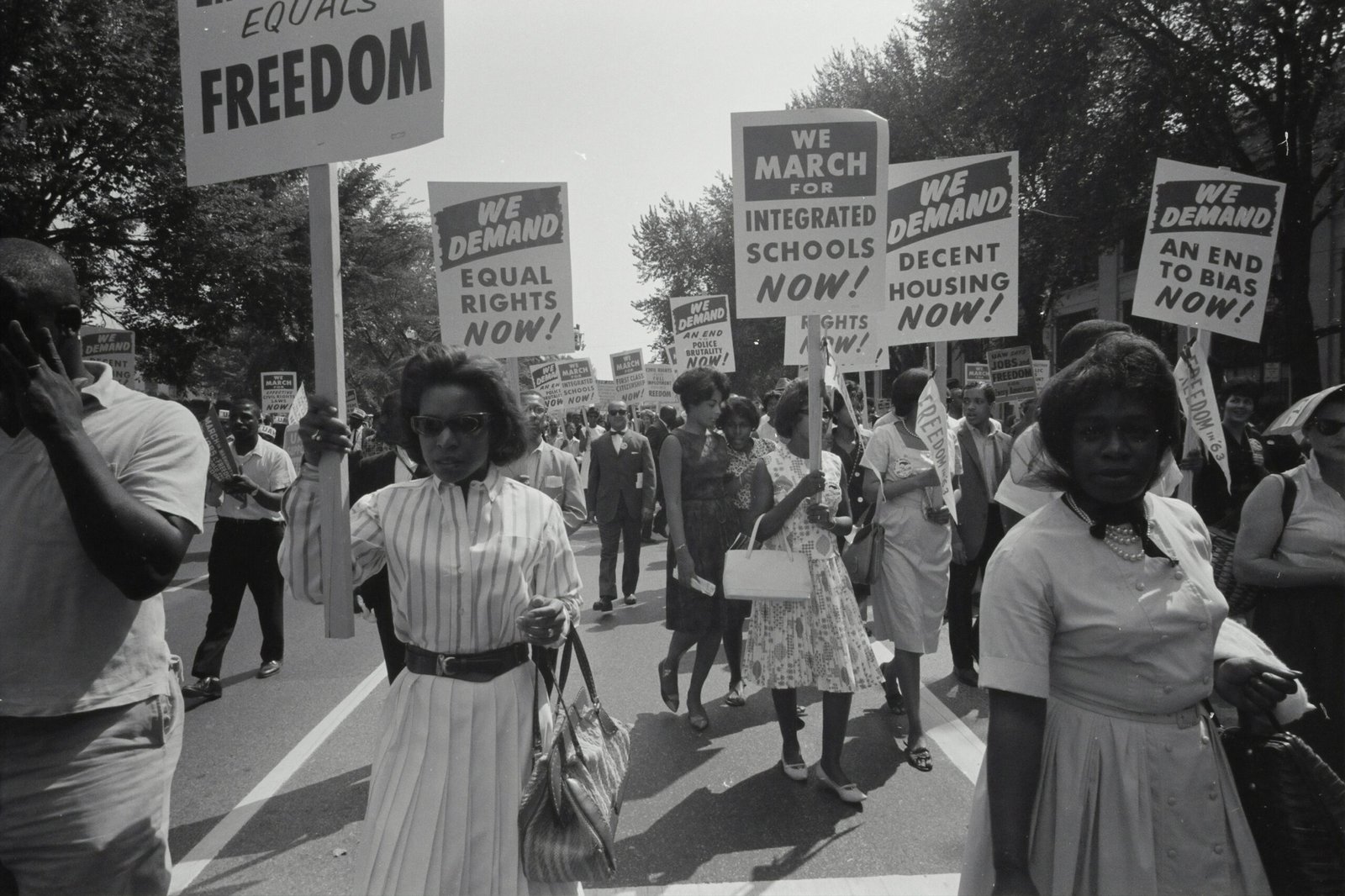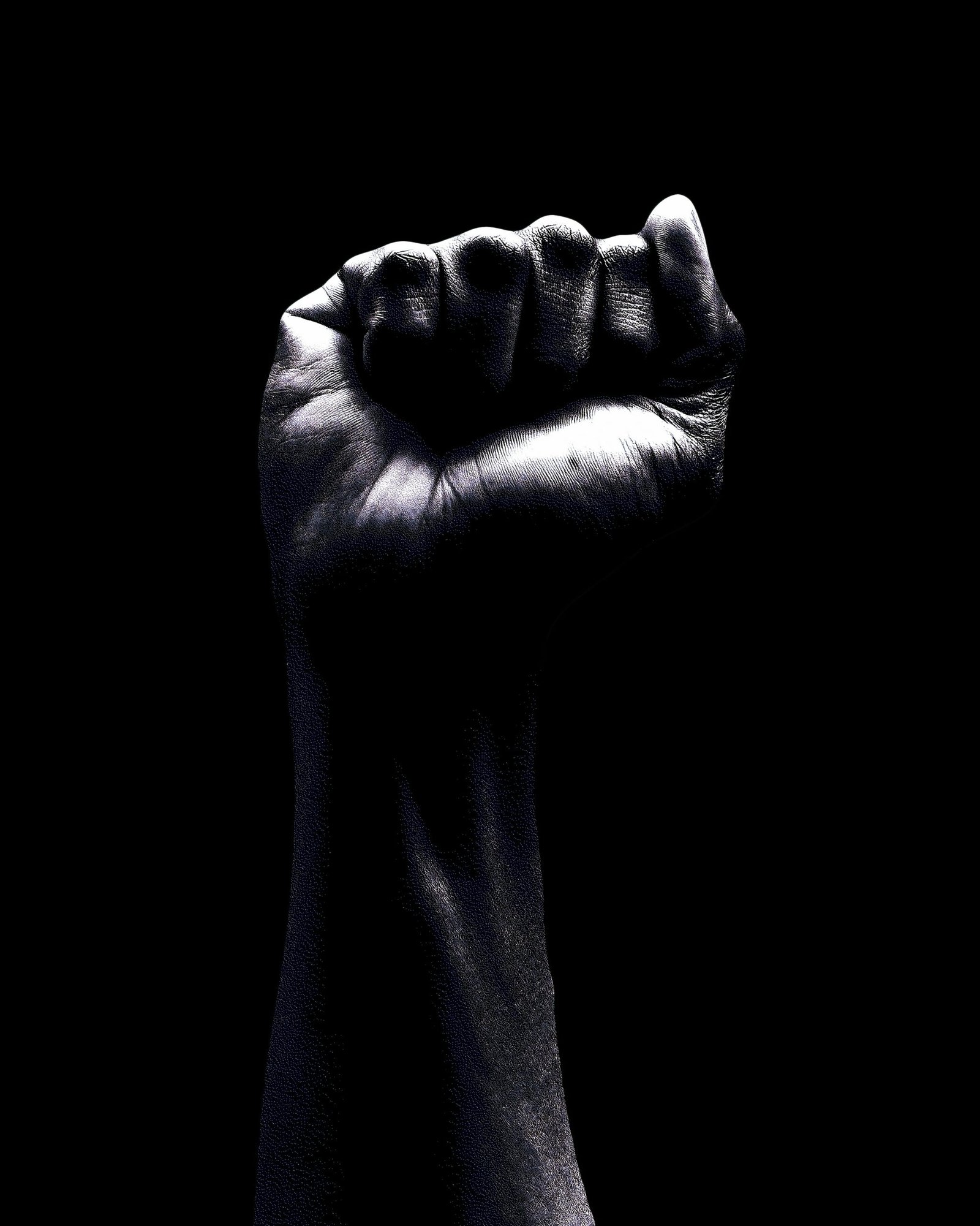Introduction to the Black Panther Party
The Black Panther Party (BPP) was established in 1966 by Huey P. Newton and Bobby Seale in Oakland, California, as a response to systemic injustices faced by African Americans. The organization’s inception came during a turbulent era marked by civil rights struggles, urban unrest, and widespread discontent with law enforcement practices. The BPP aimed to address these pressing issues through a combination of communal programs and direct action against police brutality, which was rampant at the time.
Newton and Seale were galvanized by the civil rights movements of the 1960s, witnessing firsthand the discrimination and violence inflicted upon Black communities. The BPP sought to empower disenfranchised individuals by promoting self-defense and militancy as necessary tools for survival in a society rife with oppression. Initial objectives included not only a reform of police conduct but also an overarching vision of social justice across various socio-economic factors. The organization quickly emerged as a leading voice in advocating for the rights of Black citizens and challenging the systemic inequalities that marginalized them.
The socio-political climate of the 1960s significantly influenced the formation and strategies of the Black Panther Party. Caught in the crosshairs of the Civil Rights Movement, the Vietnam War, and widespread social upheaval, African Americans were demanding revolutionary change. In this context, the BPP provided a platform for radical thought, emphasizing the importance of Black unification against a backdrop of oppression. Their assertive stance on community empowerment, coupled with outreach initiatives such as free breakfast programs and health clinics, not only highlighted their commitment to social justice but also challenged the prevailing narratives surrounding Black identity and resistance in America.
The Historical Context of Racial Tensions
Racial tensions in America have deep historical roots that can be traced back to the era of slavery. The institution of slavery established a dichotomy between white Americans and the enslaved Black population, reinforcing notions of racial superiority and inferiority. This socio-economic system, which thrived for over two centuries, fundamentally shaped societal attitudes and laid the groundwork for systemic racism. Following the abolition of slavery in 1865, the legacy of racial oppression continued through the implementation of Jim Crow laws, which institutionalized segregation and disenfranchised Black Americans.
During the late 19th and early 20th centuries, the racial divide became even more pronounced, as white supremacy groups, such as the Ku Klux Klan, emerged, fostering an environment of fear and violence against Black communities. This created substantial societal tensions, as Black individuals sought to reclaim their rights and challenge the status quo. Throughout the first half of the 20th century, the civil rights movement began to take shape, driven by the desire for equality and justice. Activists like W.E.B. Du Bois and later figures such as Martin Luther King Jr. advocated for nonviolent protest against racial segregation, striving to dismantle the broad system of oppression that had persisted for generations.
The fear of empowerment among white Americans grew as Black organizations emerged to promote self-defense and self-determination. This anxiety often manifested in violent backlash against movements aimed at racial equality. The rise of the Black Panther Party (BPP) in the 1960s can be interpreted as a direct response to this entrenched racism and systemic inequality. The BPP sought to mobilize and empower Black communities by advocating for civil rights and social justice while countering the pervasive fear that Black unification could undermine the existing social order. Understanding this historical context is crucial for grasping the complexities surrounding the formation and purpose of the Black Panthers during their time.
The Goals and Activities of the Black Panther Party
The Black Panther Party (BPP), founded in 1966, emerged during a time of significant social and political upheaval in the United States. One of the primary goals of the BPP was to address systemic oppression and to promote self-determination within the Black community. The Party established a number of initiatives that aimed to empower marginalized individuals, thereby challenging existing societal norms and advocating for fundamental rights. Among the most notable activities initiated by the Black Panther Party were community self-defense programs, which equipped members with the necessary skills to protect their communities from police brutality and other forms of violence.
In addition to self-defense, the BPP recognized the importance of providing essential services to the community. Their health care initiatives, including free medical clinics, were pivotal in addressing the disparities in access to health care for Black individuals. These clinics not only offered basic medical services but also emphasized preventive health care education, thereby fostering a more informed and healthier community. Moreover, the BPP’s educational programs aimed at combating illiteracy and enhancing civic engagement among young Black individuals played a crucial role in the empowerment of the community.
One of the most recognized initiatives was the free breakfast program for children, which aimed to ensure that children received at least one nutritious meal each day. This program demonstrated the BPP’s commitment to combating hunger and promoting education. By providing free meals, the organization sought to remove barriers to educational success and to encourage learning among school-aged children. Overall, the activities and goals of the Black Panther Party not only aimed to uplift the Black community but also to create a societal framework that fostered equality and unity, challenging the status quo of racial injustice that plagued the nation.
Responses from White Americans and Government Agencies
The Black Panther Party (BPP) emerged in the late 1960s as a response to systemic racism and inequality affecting African Americans. While their initiatives included community programs aimed at empowering Black citizens, the reactions from white Americans and government agencies were often hostile and defensive. Many perceived the BPP’s efforts for Black empowerment as a challenge to the existing social order, leading to increasing tensions and fears of widespread unification among Black Americans.
White Americans, especially those aligned with conservative ideologies, viewed the Black Panthers as a formidable threat. This perception of a rising militant Black movement stoked fears of violence and social disorder. As the BPP gained national attention, media representations often sensationalized their activities, portraying them as radicals. Such depictions contributed to a polarized view of Black empowerment, framing it as a danger to public safety rather than a legitimate struggle for justice.
In response to this perceived threat, government agencies intensified surveillance on the Black Panther Party through measures that included infiltration and intelligence gathering. The Federal Bureau of Investigation (FBI) implemented a counterintelligence program known as COINTELPRO, which aimed to discredit and dismantle the organization. Tactics utilized included spreading misinformation, harassment, and the infiltration of the party by undercover agents. This aggressive approach highlighted the extent to which the government viewed Black unification as a challenge not only to societal norms but also to national security.
Such actions contributed to a climate of fear among Black activists, as the BPP faced increasing violence and criminalization of their members. The culmination of these efforts demonstrated a concerted attempt to uphold the status quo by suppressing movements advocating for racial equality and justice. Through this lens, the responses from white Americans and government agencies reveal a complex interplay between fear and resistance to the burgeoning call for Black empowerment.
The Fears Behind Blaming Black Unity
The concept of unity among Black Americans has historically evoked psychological and sociopolitical fears within many white Americans. This apprehension is often rooted in a perceived threat to existing power structures. The notion that a unified Black community could challenge the status quo incites a fear of loss of control among those in power. This fear is not merely theoretical; it has tangible historical precedent, as reflected in the way various groups have responded to movements that promote Black unity.
At the heart of these fears lies a long-standing narrative that associates Black unity with aggression and anti-establishment sentiments. The civil rights movements, including those led by the Black Panthers, exemplified how a collective identity could empower marginalized communities, giving them a voice and instilling pride. For many white Americans, this empowerment could be perceived as a direct challenge to their dominance, provoking defensive reactions that can manifest in societal pushback against Black solidarity.
This defense mechanism often leads to attempts to undermine the legitimacy of movements advocating for Black unity, portraying them as divisive or radical. Such responses further compound societal divisions, making it increasingly difficult for constructive dialogue to occur. The perception of threat can also catalyze law enforcement and political entities to adopt measures aimed at curbing these movements, often justified through scapegoating and criminalization narratives.
Ultimately, the fear of Black unification is deeply intertwined with the historical context of race relations in America. By viewing Black unity as a threat, the dominant cultural narrative perpetuates systemic issues, preventing society from addressing the underlying fears and misunderstandings that fuel these tensions. Understanding these dynamics is essential in the pursuit of racial equity and in forging pathways toward reconciliation.
Continued Resistance to Black Unification
The legacy of the Black Panther Party (BPP) continues to resonate profoundly in contemporary society, particularly in the context of ongoing resistance to Black unification. Modern movements often draw inspiration from the BPP’s foundational principles, yet they face significant obstacles that hinder progress toward collective empowerment. These challenges manifest in various forms, including voter suppression, gentrification, and targeted economic policies that perpetuate divisions within the Black community.
Voter suppression remains a critical issue affecting Black communities across the United States. Tactics such as stringent voter ID laws, purging of voter rolls, and limited access to polling places disproportionately impact Black voters. Organizations advocating for civil rights often cite these tactics as modern-day efforts to undermine the political influence of Black Americans. The struggle for equal access to the ballot, reminiscent of the BPP’s fight for political representation, illustrates the ongoing impediments faced by those seeking to unify Black voices in the democratic process.
Additionally, gentrification poses a significant threat to the cohesion of Black neighborhoods. This process displaces long-term residents, disrupts community ties, and contributes to socioeconomic fragmentation. As property values rise and new, often wealthier residents move in, the cultural fabric of these communities can be irrevocably altered. Such transformations not only erase historical landmarks of Black resilience but also challenge the collective identity that has been nurtured over generations. Gentrification reflects broader societal patterns and economic policies that prioritize profit over people, thereby complicating efforts for unity.
Furthermore, targeted economic policies have historically overlooked the needs of Black communities, contributing to pervasive inequalities. Discrimination in housing, employment, and lending has created barriers that further sever connections among individuals within the Black community. The legacy of the BPP calls for systemic change, but current economic models often perpetuate existing divisions, underscoring the urgent need for solidarity and a unified response to these challenges.
The Impact of Media Representation
The media has played a significant role in shaping the public perception of the Black Panthers and the broader narrative of Black unification. Sensationalism, stereotypes, and misinformation have combined to create an often distorted image of the organization, contributing to the fear experienced among white audiences. From the onset of their activism in the 1960s, mainstream media outlets frequently depicted the Black Panthers through a lens of violence and extremism, overshadowing their community service initiatives and social justice goals. This portrayal was compounded by the historical context of race relations in the United States, where the mere call for equality was frequently met with hostility and misrepresentation.
Sensationalist headlines often emphasized confrontations between the Black Panthers and law enforcement, creating a narrative that overshadowed the essential aspects of their mission. The media’s tendency to highlight incidents of violence, while neglecting the organization’s charitable programs—such as free breakfast programs for children and health clinics—perpetuated a harmful stereotype of the Panthers as militant aggressors. This skewed representation was not only misleading but also incited fear within the public, contributing to a narrative that justified systemic oppression and police violence against African Americans.
However, shifts in media narratives have occurred over time. As society progressed and conversations around race, justice, and equity evolved, certain media outlets began to recognize the importance of a more nuanced representation of the Black Panthers. Documentaries, scholarly articles, and retrospective news pieces have started to present a more balanced view, recognizing the complex socio-political landscape in which the Black Panthers operated. This change has prompted a reevaluation of the organization’s legacy, emphasizing the importance of Black unification and empowerment while challenging historical narratives built on fear and misunderstanding. Media representation continues to be a potent tool that can either bridge or widen the gap in public understanding of Black history and activism.
Lessons from the Black Panther Party
The Black Panther Party (BPP) was established during a tumultuous period in American history, marked by racial injustice and civil unrest. One of the most significant lessons learned from their activism is the importance of community organizing. The BPP effectively mobilized individuals within disenfranchised communities, demonstrating that grassroots efforts are essential for meaningful social change. Their emphasis on building a coalition of diverse voices encouraged people not only to advocate for their rights but also to unite against systemic oppression. This model of community organization serves as a blueprint for current movements striving for racial equality and social justice.
In addition to community organizing, the BPP’s strategies underline the power of collective action. By standing together, individuals can amplify their voices and achieve objectives that may seem unattainable in isolation. For example, the Panthers implemented various programs like free breakfast for children and health clinics, which not only addressed immediate community needs but also illustrated the potential for change when people come together with a shared vision. These initiatives highlighted the significance of self-determination, inspiring ongoing dialogues about autonomy and access to resources in marginalized communities today.
Moreover, the Black Panther Party’s insistence on the necessity of unity remains crucial in contemporary social justice movements. The fight against systemic racism, poverty, and disenfranchisement requires solidarity among various groups. By fostering an inclusive environment, movements can draw upon diverse experiences and strategies, thus enriching their efforts. Resilience, as practiced by the BPP in the face of adversity, is also vital. Their resolve amidst significant challenges exemplifies the strength found in determination and unity. The lessons learned from the Black Panther Party not only reflect the past but continue to resonate within current efforts to further social change, reminding us of the enduring impact of community action and solidarity.
Conclusion: The Path Forward
In reflecting on the journey of the Black Panther Party, it is essential to recognize the foundational messages of unity and empowerment that continue to resonate in today’s society. The origins of the party were rooted in the urgent need to address systemic injustices and advocate for the rights of marginalized communities. By analyzing their history, we uncover not only the struggles faced by these pioneers but also the enduring principles that can guide contemporary movements for social justice.
The Black Panthers exemplified the strength found in solidarity, emphasizing that collective action is crucial for achieving equity. Their dedication to community service, education, and self-determination highlights the role individuals can play in fostering change. In many ways, their legacy urges us to reconsider the dynamics of power and the importance of unifying against oppression. It is crucial for modern audiences to understand the significance of these efforts, especially in light of the ongoing struggles for racial equality and social justice today.
As we move forward, it is imperative to engage with this history critically, questioning existing narratives and the ongoing fears surrounding Black unification. The past should serve as a catalyst for change, inspiring individuals to advocate for solidarity within their communities. Understanding the Black Panthers’ message can empower us to confront contemporary challenges and work together towards creating an equitable society for all. By fostering a renewed sense of unity, we can honor the legacy of those who fought for justice and pave the way for future generations to continue this vital work.



